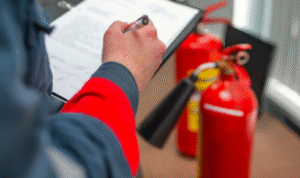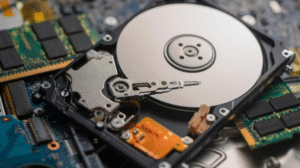The camshaft position sensor is a critical component in modern engines, providing vital information to the engine control unit (ECU) for proper timing of fuel injection and ignition. If you’re experiencing issues with your engine’s performance, understanding the location of the camshaft position sensor can be helpful in diagnosing and resolving the problem. In this article, we’ll focus on where the camshaft position sensor for Bank 1 is typically located.
1. Camshaft Position Sensor
Before delving into the specifics of its location, let’s briefly discuss the function of the camshaft position sensor. This sensor monitors the rotational position of the camshaft, which controls the opening and closing of the engine’s valves. By detecting the camshaft’s position, the sensor helps the ECU determine the precise timing for fuel injection and spark ignition.
2. Bank 1 vs. Bank 2
Modern engines are often divided into two banks, with Bank 1 typically referring to the side of the engine where cylinder 1 is located. Bank 2, correspondingly, refers to the opposite side of the engine. Understanding this distinction is crucial when identifying the location of various engine components.
3. Location of Bank 1
Now, let’s pinpoint the location of Bank 1 in your engine. In most vehicles with a V6 or V8 engine configuration, Bank 1 is located on the side of the engine where cylinder 1 is situated. This side is typically designated as the “left” or “driver’s side” of the engine when facing the front of the vehicle.
4. Identifying the Camshaft Position Sensor
Once you’ve located Bank 1, the next step is to find the camshaft position sensor. In many engines, the sensor is mounted near the cylinder head, close to the camshaft itself. It may be secured with bolts or clips and connected to the wiring harness via an electrical connector.
5. Consultation of Vehicle Manual
For precise information regarding the location of the camshaft position sensor on your specific vehicle, it’s recommended to consult the manufacturer’s service manual. This manual provides detailed diagrams and instructions tailored to your vehicle’s make and model, ensuring accurate identification of engine components.
6. Visual Inspection
Alternatively, you can perform a visual inspection of the engine bay to locate the sensor. Look for a small cylindrical or rectangular component attached to the engine block or cylinder head, often with wires leading to it. The sensor’s appearance may vary depending on the vehicle’s make and model.
7. Following Wiring Harness
If you’re having difficulty locating the sensor visually, try following the wiring harness from the ECU to the engine components. The camshaft position sensor is typically connected to the ECU via the wiring harness, providing a clue to its whereabouts.
8. Checking Near Timing Belt/Chain
In some engines, particularly those with timing belts or chains, the camshaft position sensor may be located near the timing mechanism. Check around the timing cover or housing for the sensor’s presence, as it plays a crucial role in synchronizing the engine’s operation.
9. Consulting a Mechanic
If you’re still unable to locate the camshaft position sensor or if you’re uncomfortable performing the inspection yourself, consider seeking assistance from a qualified mechanic. A professional technician can quickly identify the sensor’s location and provide expert guidance on any necessary repairs or replacements.
10. Importance of Camshaft Position Sensor
Understanding the location of the camshaft position sensor, particularly Bank 1 in your engine, is essential for diagnosing and resolving issues related to engine performance and efficiency. By pinpointing the sensor’s location and ensuring its proper functioning, you can maintain optimal engine operation and prolong the life of your vehicle.
Conclusion
In conclusion, the camshaft position sensor for Bank 1 plays a crucial role in the operation of your vehicle’s engine, providing vital information to the ECU for precise timing control. By familiarizing yourself with the location of this sensor and understanding its function, you can effectively diagnose and address any engine performance issues that may arise. Whether you perform the inspection yourself or seek assistance from a professional mechanic, locating and maintaining the camshaft position sensor is key to ensuring smooth and efficient engine operation.





